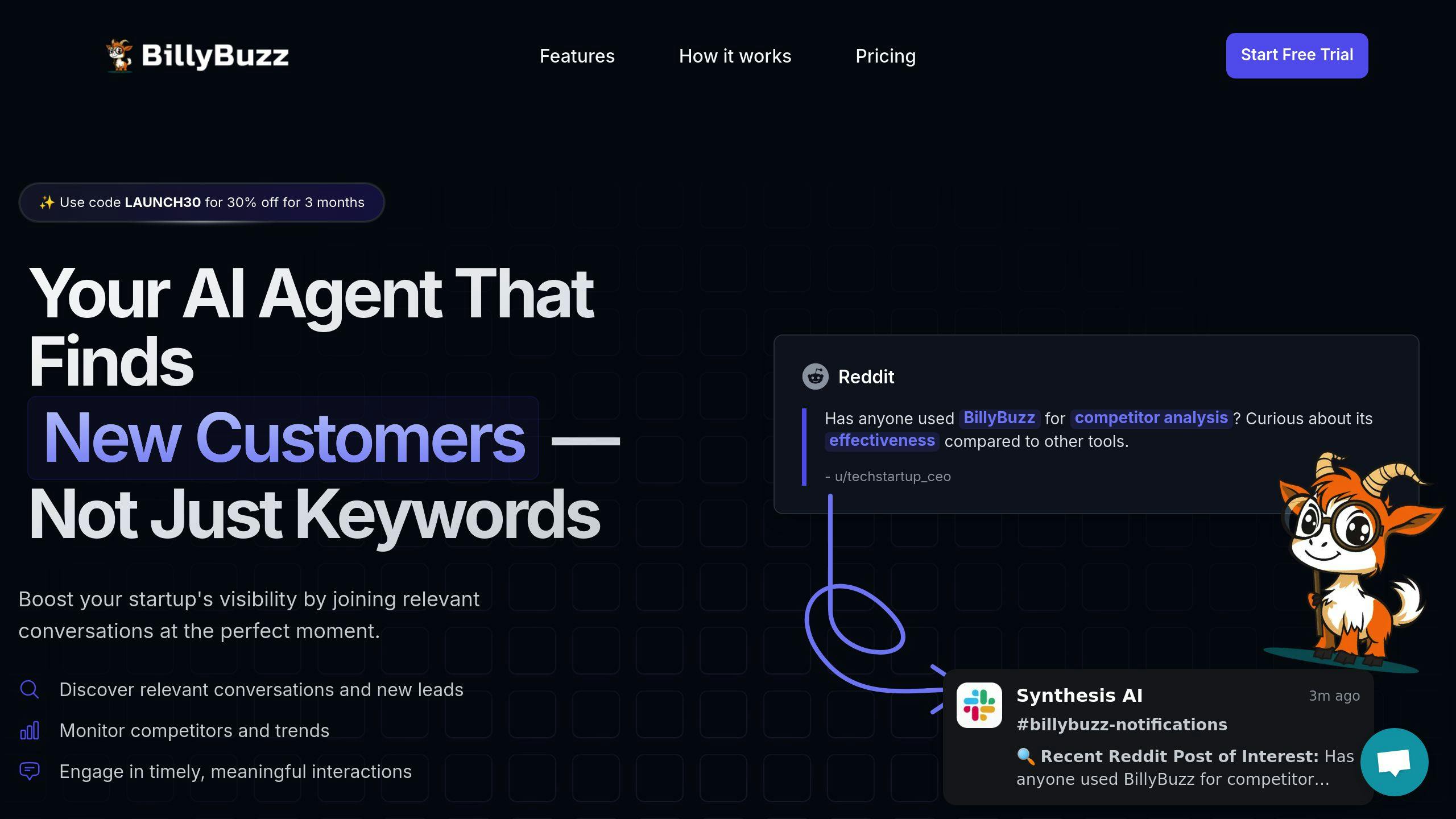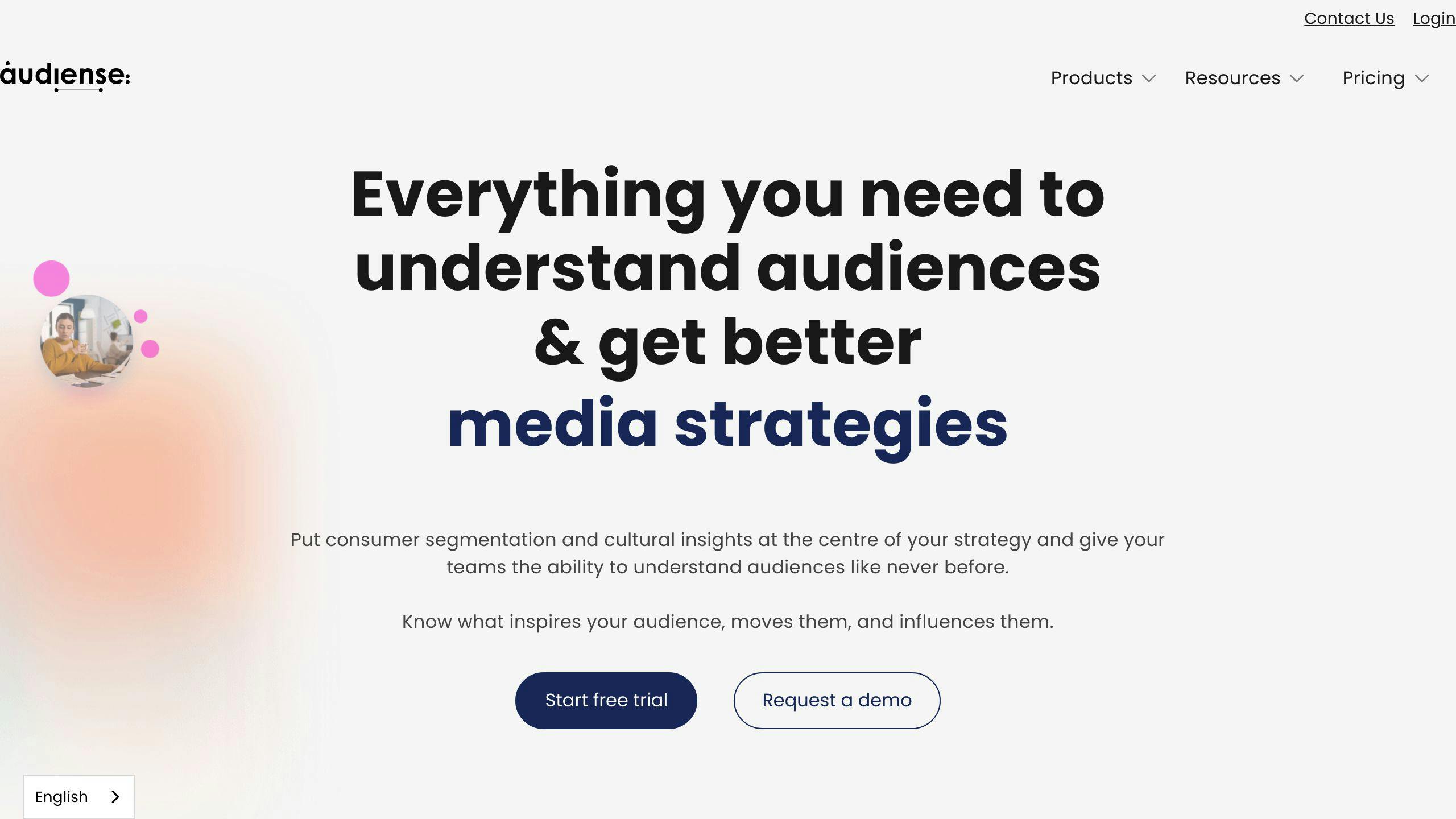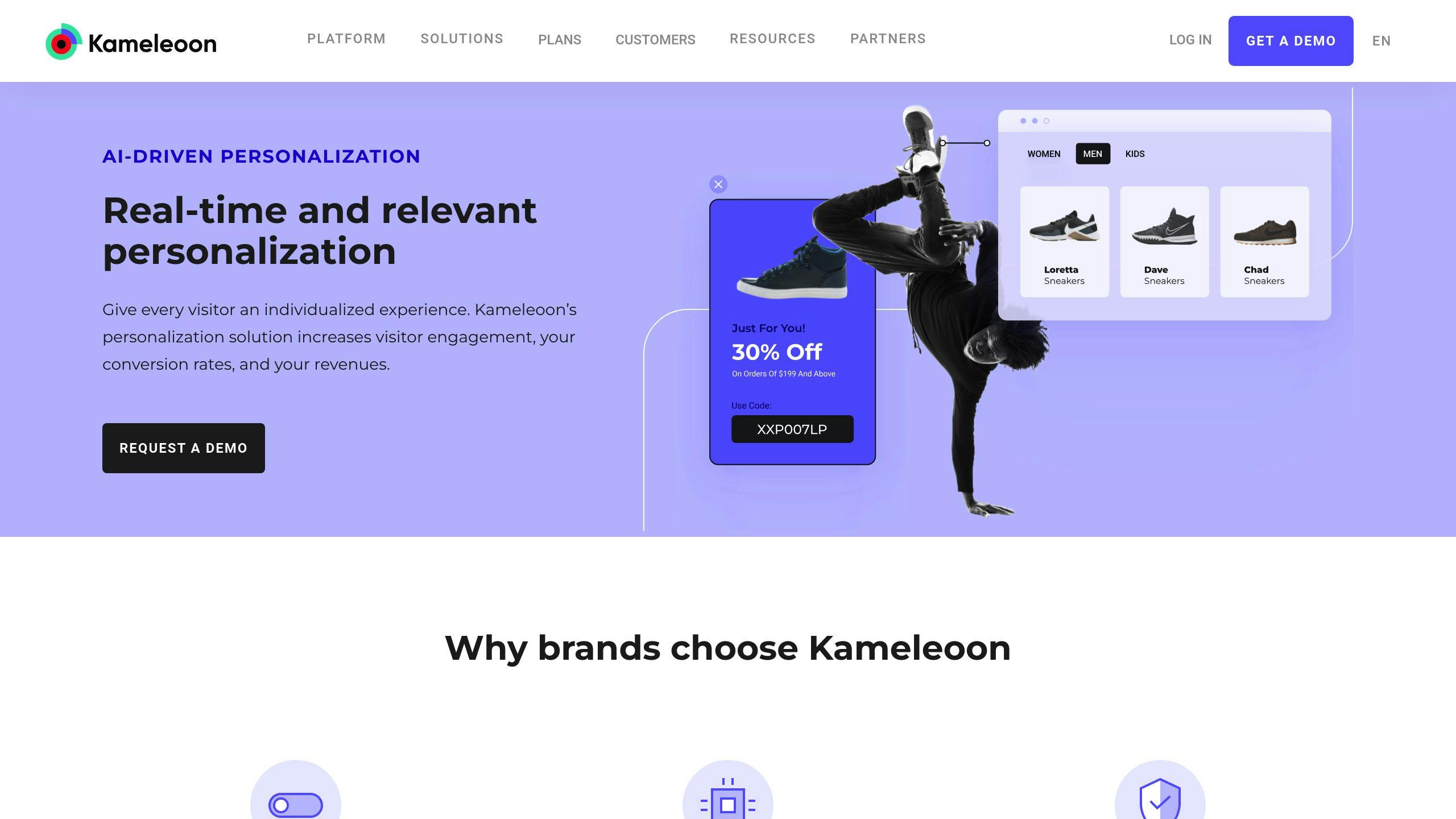
Personalized Outreach with AI Segmentation
Generic outreach campaigns often fail - AI segmentation is the solution. By analyzing data, AI helps businesses create tailored messages that resonate with specific audience groups, improving engagement, response rates, and resource efficiency. Here’s a quick overview of what AI segmentation offers:
- Precise Targeting: AI analyzes behavior, demographics, and interests to deliver personalized content.
- Higher Engagement: Tailored messaging leads to better interactions and conversions.
- Time Savings: Automates data analysis and updates segments in real-time.
Tools like BillyBuzz, Audiense, and Kameleoon make it easy to implement AI-powered segmentation, ensuring your outreach efforts are relevant and effective. Ready to personalize your campaigns? Let’s dive in.
Scalable, Personalized Email Outreach with AI
Benefits of Using AI for Audience Segmentation
AI-driven audience segmentation is changing the way businesses connect with their target groups by providing data-backed insights. Here’s a closer look at the advantages it brings to outreach campaigns.
More Precise Targeting
AI doesn’t stop at basic demographics - it dives deeper by examining multiple data points at once. It uncovers patterns like changes in user behavior or engagement trends that manual analysis often misses. For example, AI can pinpoint the best times to engage different groups, such as hospital administrators versus physicians, ensuring outreach is perfectly timed [1].
By analyzing factors like behavior (e.g., interactions), demographics (e.g., job roles, industries), and interests (e.g., preferred content), AI helps create highly tailored messaging. The result? Each audience segment gets content that feels relevant and timely.
Improved Engagement and Conversions
When messaging is tailored to specific audience segments, engagement naturally increases. Generic outreach often leads to low interaction and weak responses, but AI-powered segmentation solves this by delivering content that matches each prospect’s exact needs [1].
AI tools track customer behavior across different channels to understand what resonates with each group. This insight allows businesses to craft messages that truly connect, boosting both engagement and conversion rates [1].
Time and Effort Savings
AI takes over the heavy lifting of audience analysis by processing large volumes of data in seconds. It also updates segments automatically as preferences change, keeping your outreach relevant without constant manual intervention [1][3].
With these advantages, the next step is finding the right tools to harness AI for audience segmentation effectively.
sbb-itb-efb8de3
Top Tools for AI-Powered Audience Segmentation
Choosing the right tools can make all the difference when it comes to effective AI-driven audience segmentation. Below are three platforms designed to elevate your targeting and analysis efforts.
BillyBuzz: Smarter Social Media Monitoring

BillyBuzz uses an advanced AI-powered relevancy scoring system to go beyond simple keyword matching. It analyzes conversations across platforms like Reddit and X, identifying the ones that truly matter for your outreach goals. What sets it apart is its ability to understand your business context, ensuring that your engagement efforts are both timely and meaningful. With flexible plans for businesses of all sizes, BillyBuzz makes it easy to scale your social media monitoring while delivering highly personalized outreach.
Audiense: Data-Driven Audience Insights

Audiense focuses on analyzing social media data to create precise audience segments. Its AI engine digs into demographics, behaviors, and interests, offering a clear picture of your audience. This allows marketers to craft messages that truly connect with specific groups.
The platform also uncovers patterns in social interactions, giving you a deeper understanding of what motivates your audience. These insights are essential for developing campaigns that align with the preferences and behaviors of each segment.
Kameleoon: Predictive Campaign Optimization

Kameleoon leverages predictive analytics to determine the best strategies for each audience segment. It adapts in real-time based on campaign outcomes, improving engagement and conversions over time. By continuously refining its recommendations, Kameleoon helps ensure your outreach efforts remain effective and relevant.
Each of these tools offers distinct advantages, enabling businesses to implement AI-powered segmentation strategies that result in more personalized and impactful campaigns. The next step? Integrating the right tool into your marketing workflow to fully harness its potential.
Steps to Add AI Segmentation to Your Marketing
Once you've chosen the right AI tools, the next step is integrating them into your marketing strategy to create personalized, data-driven campaigns. Here's how to make AI segmentation work for you.
Collect and Analyze Data
Effective AI segmentation starts with gathering detailed audience data. AI tools can analyze demographic, behavioral, and engagement information to uncover patterns and define audience segments [1]. To get the best results, ensure your data collection is consistent and up-to-date across all channels.
Build Tailored Campaigns
Leverage AI insights to design campaigns that speak directly to each audience segment. Focus on:
- Aligning your content's style and tone with each segment's preferences
- Addressing specific challenges or needs unique to each group
- Reaching segments through their preferred channels at the best times
These targeted efforts help ensure your messaging feels relevant and engaging.
Track and Improve Campaigns
Use tools like BillyBuzz to monitor social media activity and measure how well your campaigns are performing across different segments [2][4]. This approach allows you to:
- Pinpoint which messages resonate most with each audience
- Make informed adjustments to improve targeting
- Update segmentation criteria based on real campaign data
By continuously analyzing your results and feeding that information back into your strategy, you can fine-tune your approach and improve your outreach over time [1][3].
Following these steps will help you use AI segmentation to build campaigns that connect with your audience on a deeper level, driving better engagement and results.
Conclusion: The Role of AI in Outreach Success
Key Takeaways
AI-powered segmentation helps businesses connect with their audiences by using detailed, data-driven personalization to refine outreach strategies. By analyzing vast amounts of data, AI creates campaigns tailored to specific audience segments, making them more effective and impactful [1][3]. This approach automates complex data processes while ensuring accuracy and relevance.
The Importance of AI Segmentation
In a crowded market, businesses can’t afford to stick with one-size-fits-all outreach. Generic campaigns often fail to capture attention, but AI segmentation addresses this by enabling highly targeted, personalized efforts. Tools like BillyBuzz are now essential for staying competitive, offering benefits such as:
| Feature | Benefit |
|---|---|
| Real-time Insights | Identify relevant social conversations and audience pain points instantly |
| Automated Analysis | Continuously monitor and segment audiences without manual effort |
| Improved Relevance | Match offerings to audience needs based on context, not just keywords |
AI tools make it possible to scale personalized outreach while keeping it genuine. By analyzing context and understanding relevance beyond basic keywords, businesses can form stronger connections with their audience [2][4].
With real-time insights, automated processes, and smarter personalization, AI segmentation allows businesses to craft campaigns that truly resonate. This approach ensures outreach efforts are not only efficient but also drive results that matter [1][3].
